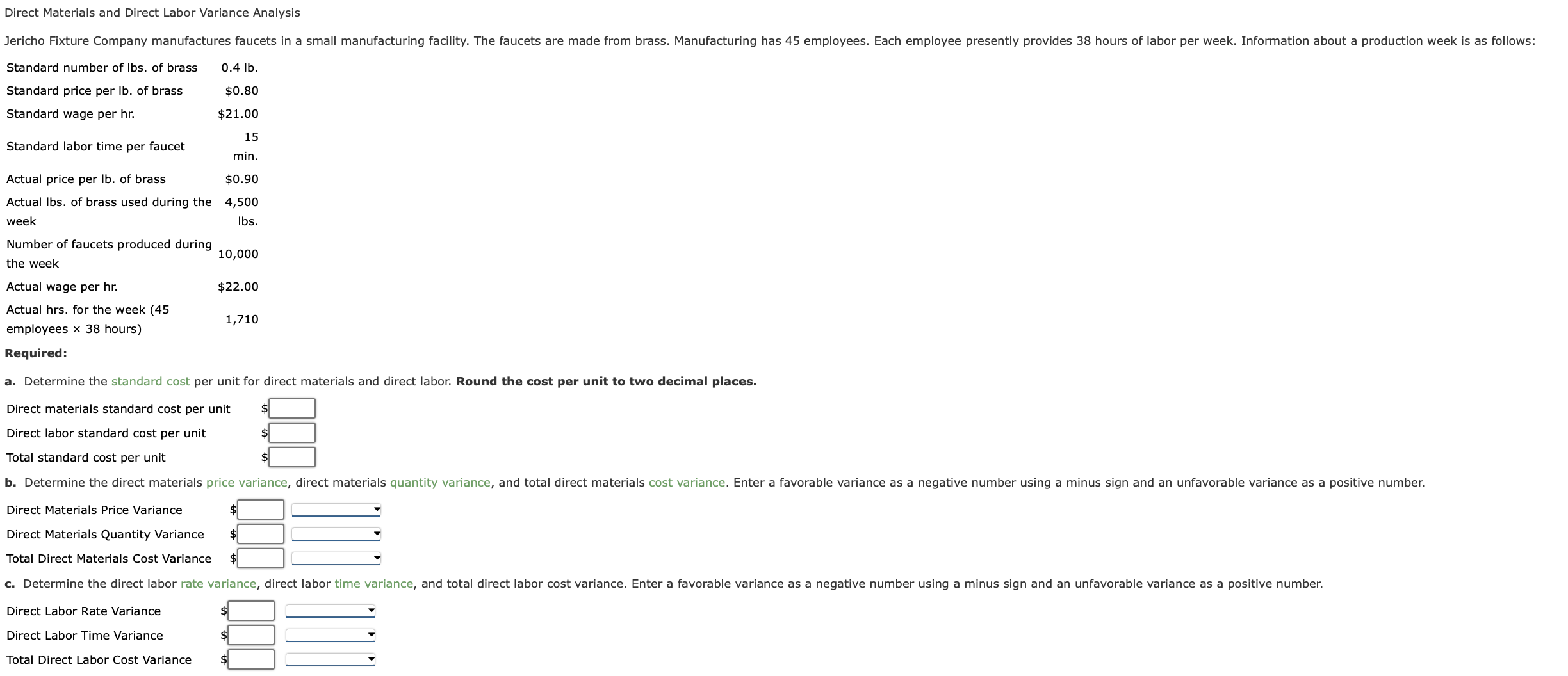
The reason is that the highly experienced workers can generally be hired only at expensive wage rates. If, on the other hand, less experienced workers are assigned the complex tasks that require higher level of expertise, a favorable labor rate variance may occur. However, these workers may cause the quality issues due to lack of expertise and inflate the firm’s internal failure costs.
Direct Labor Variances FAQs
It is very important to measure how close you are to what you expected in order to determine how well labor is utilized on a jobsite. This variance shows how efficient labor is, comparing it to the standards set in the first parts of the planning phase. Controlling these costs is essential, and one of the key ways to do this is through calculating direct labor efficiency variance. This calculation will help you to compare the labor hours you’ve budgeted with the hours actually worked. By calculating it, you will pinpoint inefficiencies and make informed decisions.
Direct Labor Mix Variance

Direct labor costs are defined as a cost of labor that goes directly into the production or manufacturing of a good. These include the wages, taxes, and benefits paid to the employees tax withholding that directly worked on the product over a time period. However, it may also occur due to substandard or low quality direct materials which require more time to handle and process.
Types of Labor Cost Variance
Daniel S. Welytok, JD, LLM, is a partner in the business practice group of Whyte Hirschboeck Dudek S.C., where he concentrates in the areas of taxation and business law. Dan advises clients on strategic planning, federal and state tax issues, transactional matters, and employee benefits. He represents clients before the IRS and state taxing authorities concerning audits, tax controversies, and offers in compromise. He has served in various leadership roles in the American Bar Association and as Great Lakes Area liaison with the IRS. The articles and research support materials available on this site are educational and are not intended to be investment or tax advice.
Regular analysis helps in promptly identifying new variances and addressing them before they escalate. Additionally, continuous improvement initiatives, such as enhancing training programs, optimizing workflows, and maintaining favorable working conditions, can lead to sustained productivity gains and cost savings. Background Company A, a mid-sized manufacturing firm, experienced significant fluctuations in its labor costs over several quarters. Upon analyzing their financial statements, management identified a persistent unfavorable labor rate variance. This results in a favorable labor efficiency variance of $3,000, indicating that the company used 200 fewer hours than expected, saving $3,000 in labor costs.
- However, employees actually worked 3,600 hours, for which they were paid an average of $13 per hour.
- A positive value of direct labor rate variance is achieved when standard direct labor rate exceeds actual direct labor rate.
- Factors such as wage increases, differences in pay scales for new hires versus seasoned employees, and merit-based raises can impact the actual hourly rate, leading to a labor rate variance.
- The standard cost of direct labor and the variances for the February 2023 output is computed next.
- The Human Resources and Accounting departments will set a standard cost for labor, and the budget will be built on that.
By fostering a culture of continuous monitoring and improvement, businesses can achieve better control over labor costs, enhance overall productivity, and drive long-term financial success. Embracing these practices ensures that labor variance management becomes an integral part of the company’s operational strategy, contributing to its growth and profitability. By understanding the causes of labor variances and implementing targeted corrective actions, companies can enhance labor cost control, improve efficiency, and boost overall productivity. Regular analysis and interpretation of labor variances are essential for maintaining financial health and operational effectiveness. Labor efficiency variance measures the difference between the actual hours worked and the standard hours that should have been worked for the actual production level. It reflects how efficiently labor resources are utilized in the production process.
If direct materials is the cause of adverse variance, then purchase manager should bear the responsibility for his negligence in acquiring the right materials for his factory. Factors such as wage increases, differences in pay scales for new hires versus seasoned employees, and merit-based raises can impact the actual hourly rate, leading to a labor rate variance. If we compute for the actual rate per hour used (which will be useful for further analysis later), we would get $8.25; i.e. $325,875 divided by 39,500 hours.
If customer orders for a product are not enough to keep the workers busy, the production managers will have to either build up excessive inventories or accept an unfavorable labor efficiency variance. The first option is not in line with just in time (JIT) principle which focuses on minimizing all types of inventories. Excessive inventories, particularly those that are still in process, are considered evil as they generally cause additional storage cost, high defect rates and spoil workers’ efficiency. Due to these reasons, managers need to be cautious in using this variance, particularly when the workers’ team is fixed in short run. In such situations, a better idea may be to dispense with direct labor efficiency variance – at least for the sake of workers’ motivation at factory floor.
